
“How do I transition from conventional shoes to minimalist shoes?” is one of the most common questions we receive at Natural Footgear. I, Dr. Robyn Hughes, co-wrote the following article with Correct Toes inventor Dr. Ray McClanahan to address this very question. This article originally appeared on the Correct Toes blog.
Many people are aware that a transition period is required when switching from conventional shoes to minimalist shoes (now sometimes referred to as “functional footwear”). In fact, this is one of the most common topics we hear about from readers here at Natural Footgear. Most people want to know the proper protocol for transitioning to men's or women's foot-healthy footwear—shoes, boots, or sandals that are widest at the ends of the toes, have flexible soles, are lightweight, and possess no heel elevation, toe spring, or artificial arch bumps or props. Though every individual is different and has unique factors or circumstances to consider, we’ve come up with eight general suggestions to heed that are important for everyone making this transition.
And here they are:
- Take a slow, progressive approach
- Proceed in a stepwise fashion
- Allow time for adjustments to occur
- Address gait changes
- Use metatarsal pads and heel cups, if necessary
- Use Correct Toes toe spacers
- Add barefoot time to your regimen
- Perform key home care exercises
Below, we explore each of these suggestions in greater detail. Read on to learn all about how to successfully transition from conventional shoes to minimalist shoes.
1. Take a Slow, Progressive Approach

It’s perfectly normal for you to be excited about this new approach to foot health and function. After all, countless people have already benefited from foot-shaped minimalist shoes and natural foot health approaches. But it is possible to be overzealous in the adoption of this new footwear, and failing to transition slowly and properly from conventional shoes to minimalist shoes might lead to problems for some.
Consider wearing your new minimalist shoes for a very short period at first, such as 30 minutes per day, and then gradually increasing wear-time by 30 minutes per day as your feet and body adapt to the changes. If you’re a runner or walker who's using minimalist athletic shoes for the first time, consider paring back your mileage initially. As your foot and toes become stronger, you can begin wearing your minimalist shoes for longer runs or walks.
Some individuals may be good candidates for a slightly accelerated transition period. This could include runners or walkers who are experiencing significant pain while using their conventional athletic shoes or those who already spend a lot of time barefoot. If you opt to stop using conventional footwear altogether after starting in with minimalist shoes, it's particularly important to remain vigilant and monitor your feet and lower legs for signs of fatigue or strain. Know when to back off and give your feet some time to rest and adapt to the changes taking place in your tissues.
Note: It's very important to understand that minimalist shoes go hand in hand with a change in running form. Because the soles of these shoes are thin and flexible, you can't pound the ground as hard with your footfalls. Most people who switch from conventional athletic shoes to minimalist athletic shoes adopt a forefoot or “midfoot” (i.e., whole foot) strike that occurs directly underneath the body, instead of a heel strike that occurs in front of the body. This forefoot or midfoot strike is important for dissipating the ground reaction forces experienced by your feet and lower extremities when running barefoot or in minimalist shoes. Our article entitled The Shoe Cushioning Myth delves into this topic in much greater detail.
2. Proceed in a Stepwise Fashion

Many people benefit from a stepwise approach to minimalist shoes that involves a gradual transition from a built-up conventional shoe to a transitional type of shoe (such as the Lems Trail Blazer) to a true minimalist shoe. There are two main considerations as it concerns this stepwise approach:
- The sole of the foot
- The Achilles tendon
The sole of the foot is extremely sensitive, which is great for sensing the ground and making appropriate micro-adjustments during gait. But after a lifetime of wearing thick-soled shoes, the sole of the foot (including the skin, muscles, nerves, and other tissues that make up this part of the body) is not properly adapted to the ground, and being barefoot or using thin-soled shoes can be uncomfortable.
The best way to build up or condition your foot’s sole is to start with slightly thicker-soled footwear and then move to thinner-soled options over time. Note that your thicker-soled footwear selection should still possess all the other foot-healthy characteristics we recommend, specifically, a flat platform (i.e., no heel elevation, no toe spring, and no arch-propping inserts), a toe box that's widest at the ends of your toes, a flexible sole that you can easily bend or twist, and a low overall weight.
After wearing conventional shoes with heel elevation for years (or decades, in many cases), the Achilles tendon often becomes contracted, or shortened (sometimes up to three-quarters of an inch!). A shortened Achilles tendon will return to its normal length after conventional footwear is abandoned and the foot is allowed to rest on a level plane, but this process takes time. Heat, physical therapy modalities, and warming or cooling gels can help with this transition and rehabilitation.
Shifting from a shoe with heel elevation to a “zero drop” platform can place a significant amount of strain on your Achilles tendon, and overdoing it, especially at first, can cause damage and pain in this part of your body. Again, a slow, stepwise shift from conventional footwear to transitional footwear to truly minimalist footwear can make the leap to more foot-healthy shoes a more pleasant experience.
3. Allow Time for Adjustments to Occur

The changes and deformities that happen in feet and toes exposed to conventional footwear take many years to occur. It’s no surprise, then, that positive, healthy changes and true foot and toe rehabilitation will also take some time. Some people who transition to minimalist shoes do not allow enough time for the soles and the muscles in the feet and the rest of the lower body to strengthen and adapt. Transitioning to minimalist shoes will, in most cases, work your foot and lower body in a very new and unique way, leading to initial soreness and fatigue in many before the longer-term strength gains and other favorable adaptations occur. Be patient, monitor your body’s response to this transition, and take it slowly! Changes are afoot.
4. Address Gait Changes

It’s common for gait changes to occur when switching from conventional shoes to minimalist models. Most people who wear conventional shoes are heel-strikers (thick, elevated heels make it almost impossible to be anything but). People who wear minimalist shoes, on the other hand, often first contact the ground with the forefoot or the entire foot all at once—a very different gait pattern that has wide-ranging effects throughout the body. This change in gait pattern tends to happen naturally upon moving to footwear with a completely flat (and thin) support platform. But sometimes there is a lag in gait changes that occurs during this transition, and some people still continue to heel strike or pound or slap the pavement even after shifting to minimalist footwear.
Heel striking in minimalist shoes may cause some heel discomfort, as there is no longer the same level of cushioning in place to seemingly absorb the shock. Using heel cups (please see the next section for further details about heel cups) can be helpful in reducing or preventing this discomfort. Another helpful approach is to pay a lot of attention to how your feet are contacting the ground with every step or stride you take. Basically, just feel and listen to your body and avoid distractions (chatting with friends, listening to music, etc.) while you’re walking or running during this transition period. Strive to practice your “quietest” possible run, paying special attention to the location and force of your footfalls while making as little sound as possible every time your foot contacts the ground. Our article entitled Three Meditations for Running offers further thoughts on things you can do to ensure a healthy and optimal running gait.
5. Use Metatarsal Pads & Heel Cups, if Necessary

Using Pedag metatarsal pads or Strutz Pro foot pads is an unobtrusive way to restore proper muscle and tendon balance in your foot and lower leg. Metatarsal pads also reposition your forefoot fat pad back to a location that cradles and protects your metatarsal heads. The metatarsal heads are a common pain point in many people with foot problems, and they are a common location for stress fractures in those who habitually slap the ground when running (a regular occurrence in those who wear conventional athletic shoes). Metatarsal pads, if placed properly, can also help spread your transverse foot arch, which helps take pinch pressure off the sensitive structures that run through the ball of your foot, including nerves and blood vessels.
SHOP PEDAG METATARSAL PADS SHOP STRUTZ PRO FOOT PADS

Heel cups are another helpful (and unobtrusive) natural foot product that alleviates point tenderness in the heel—something that occurs from time to time in minimalist shoe adopters. This point tenderness can happen early in the transition phase or later on, after you’ve been wearing minimalist shoes for a period of time. Point tenderness in the heel is relatively rare in minimalist shoe wearers, but it can be uncomfortable and, in some cases, lead to abandonment of natural foot health approaches. A simple heel cup is often enough to address this discomfort and keep you in footwear that lets your foot function the way nature intended. Setbacks may happen from time to time, but in most cases, there is usually a simple solution or tweak possible that can help you stay on the path toward optimal foot health.
SHOP HEEL CUPS
6. Use Correct Toes Toe Spacers

Using Correct Toes is one of the most powerful ways to support the transition from conventional footwear to minimalist shoes. Correct Toes naturally curbs overpronation and enables proper bodyweight distribution throughout your foot. These comfortable and durable toe spacers also encourage a natural strengthening of the muscles and tendons that act on your feet and toes. Correct Toes works well in minimalist shoes with anatomically appropriate toe boxes (i.e., toe boxes that are widest at the ends of the toes, not at the ball of the foot). In fact, all of the men's and women's footwear we feature on the Natural Footgear site is Correct Toes compatible. To learn more about this helpful toe spacing device, please see our article entitled Top 10 Benefits of Correct Toes.
SHOP CORRECT TOES
7. Add Barefoot Time to Your Regimen

Adding some barefoot time to your foot health and minimalist shoe transition regimen can be extremely helpful in ensuring a smooth and injury-free shift. Spending at least some time barefoot, even if only around the house, can help condition the soles of your feet and strengthen your foot and toe muscles, accelerating the foot adaptations that occur with Correct Toes use and minimalist shoe wearing in a safe and constructive manner. If appropriate, you may also consider walking outdoors in your bare feet, weather permitting, starting with as little as one block or a few hundred yards/meters. Consider walking barefoot on surfaces that offer good visibility, such as a running track or the hard-packed sand at a beach, so that you don’t inadvertently step on any debris (grass can hide sharp objects).
8. Perform Key Home Care Exercises

Performing certain exercises at home (or at work) can help with your transition from conventional to minimalist shoes. The most helpful exercises you can perform include the Toe Extensor Stretch, the Big Toe Stretch, the Hammertoe Stretch, the Ball Rolling Exercise (we like using the Naboso Neuro Ball for this one), and other exercises that help strengthen your intrinsic foot muscles. These exercises, when performed consistently, help relax tight muscles and tendons and build long-term foot strength and resiliency. For the best possible outcome, perform these exercises at least several times each day.
SHOP NABOSO NEURO BALL

Using BlackBoard training tools, including the BlackBoard Basic (pictured above, with MobilizationBars), ToeBands, and Meta Trigger, is a fantastic way to improve foot strength, enhance foot and toe joint mobility, train important motor skills, hone balance and agility, develop healthy foot and toe movement patterns, and activate and stabilize key structures throughout your foot and lower leg. For these reasons, and more, BlackBoard training tools are very helpful in supporting the transition to minimalist footwear and can help you build a better (i.e., more capable and resilient) foot. Consider incorporating these helpful tools into regular foot care regimen, both during your transition to minimalist shoes and beyond.
SHOP BLACKBOARD TRAINING TOOLS
Whole Body Barefoot by Katy Bowman

In addition to the transitioning strategies mentioned above, we have found that reading Katy Bowman's Whole Body Barefoot is very helpful in making the leap to more foot-healthy footwear. Indeed, Whole Body Barefoot addresses the topic of how to safely and successfully transition from conventional footwear to minimalist footwear. This well-written and insightful guidebook incorporates 25 unique exercises designed to build more supple and resilient feet and help prevent foot injuries in all those who adopt flat, wide, and flexible shoes. Take your knowledge of natural foot health—how to build it and how to preserve it—to the next level by reading this excellent book by Katy Bowman, M.S.
PURCHASE BOOK
Patience, Diligence & Perseverance: The Keys to a Successful Transition

Using healthy minimalist shoes—shoes that are widest at the ends of your toes, have a flexible sole, are lightweight, and possess a completely flat support platform—offers the possibility of profound and enduring foot health benefits. Like most aspects of health, it’s always best to exercise caution and restraint in transitioning to a new and natural approach. Your feet and body are amazingly adaptable and will indeed strengthen if treated appropriately. But this remarkable adaptation works best with patience, diligence, perseverance, and a progressive approach. It is an investment well worth making, as it will pay foot health dividends for an entire lifetime. If you have any questions about any aspect of transitioning from conventional shoes to minimalist footwear, please contact us.
And now: Onward, to excellent foot health!
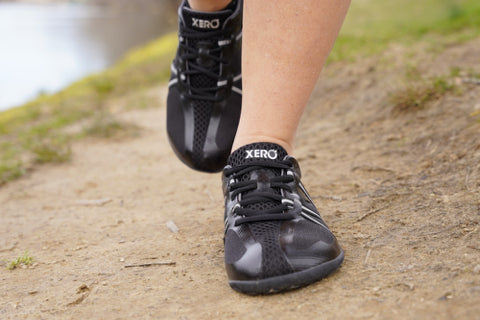 Dr. Robyn and I are often stopped on hiking and running trails by fellow outdoor enthusiasts who notice our unique footwear choices. With puzzled looks on their faces, they ask us how we avoid spraining our ankles in such minimalist footwear on such uneven terrain. The truth is, minimalist shoe wearers are at a distinct advantage when it comes to avoiding dreaded—and often temporarily debilitating—ankle sprains. But not all minimalist...
Read more
Dr. Robyn and I are often stopped on hiking and running trails by fellow outdoor enthusiasts who notice our unique footwear choices. With puzzled looks on their faces, they ask us how we avoid spraining our ankles in such minimalist footwear on such uneven terrain. The truth is, minimalist shoe wearers are at a distinct advantage when it comes to avoiding dreaded—and often temporarily debilitating—ankle sprains. But not all minimalist...
Read more
















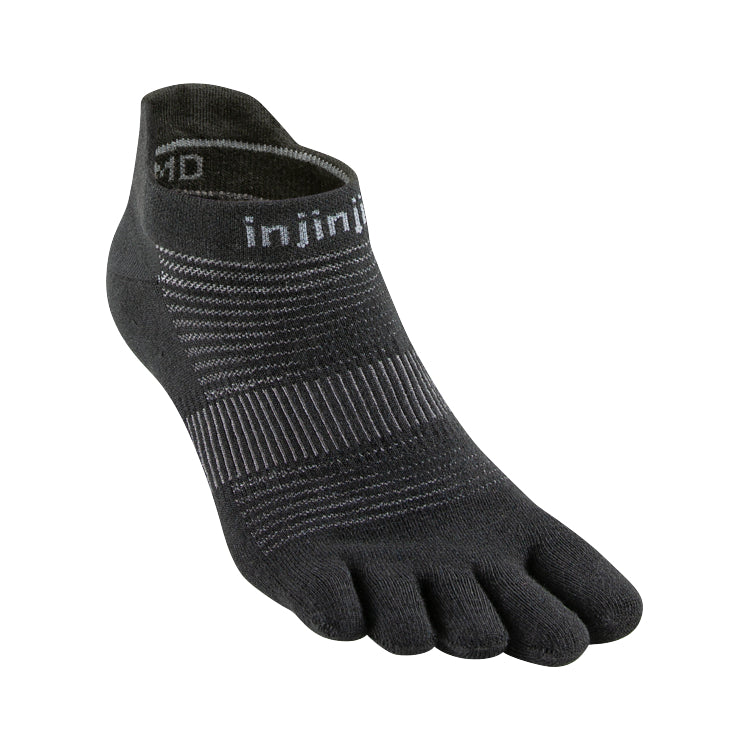

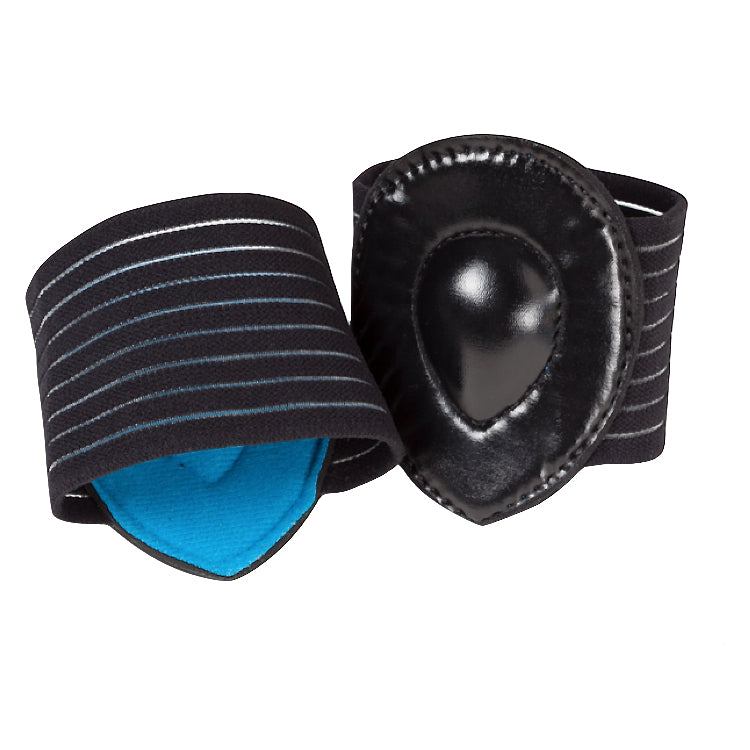
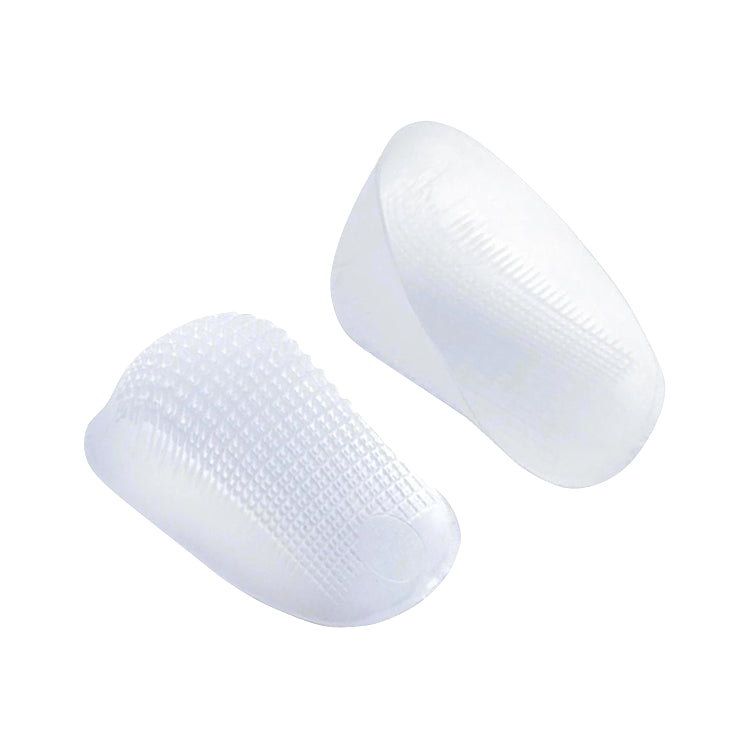

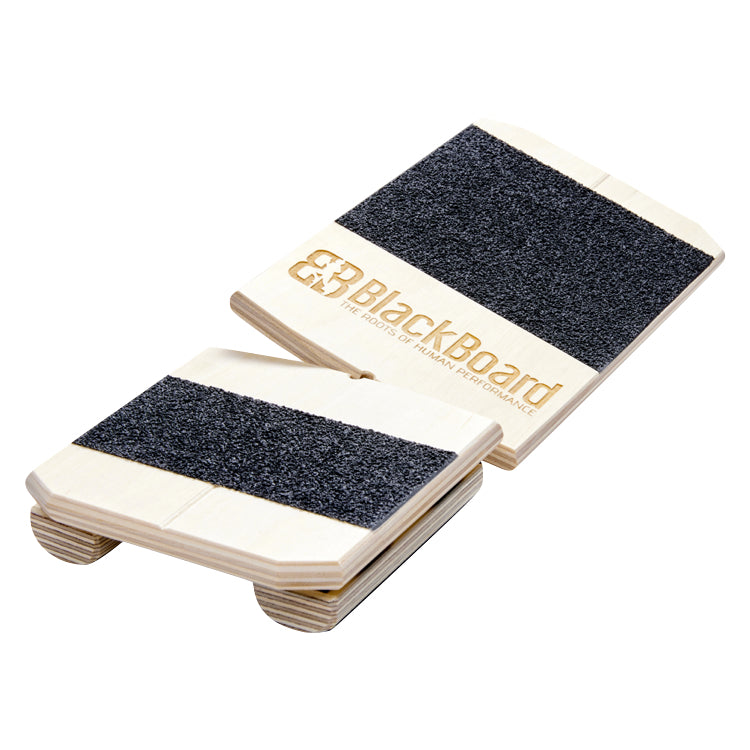
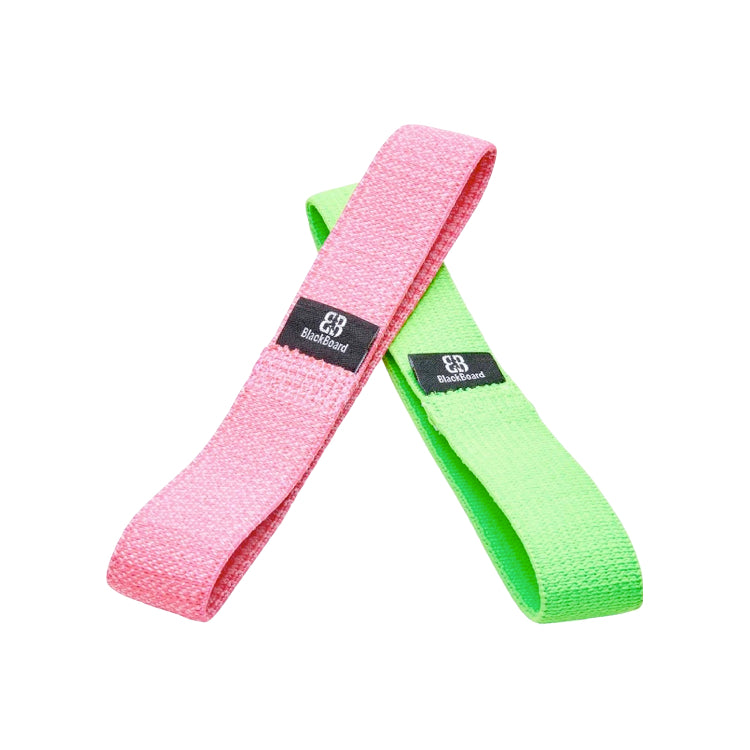
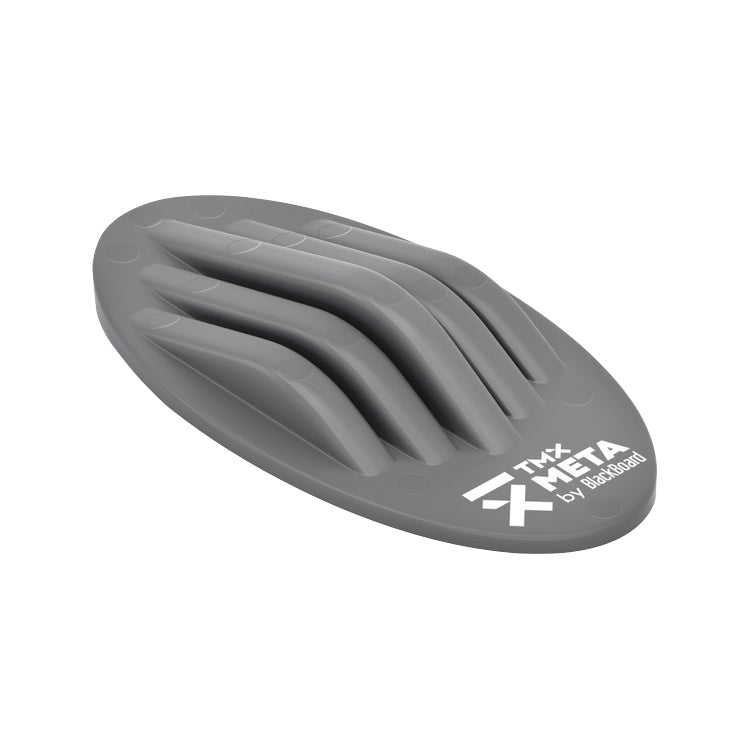
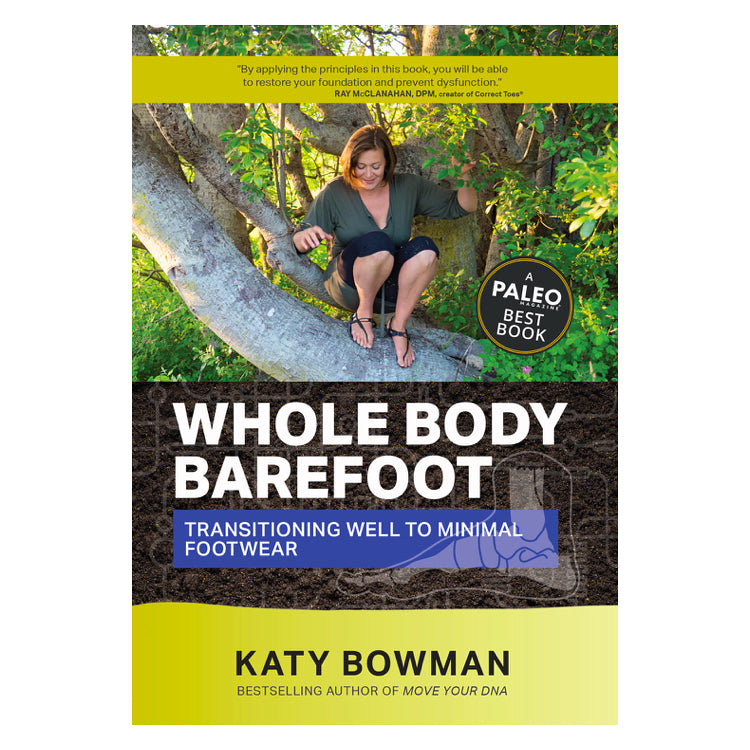
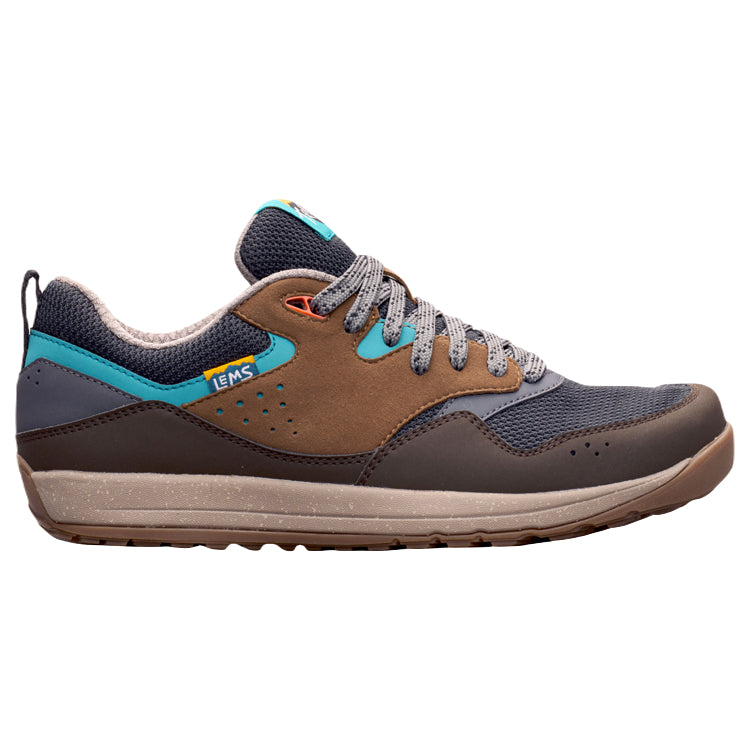
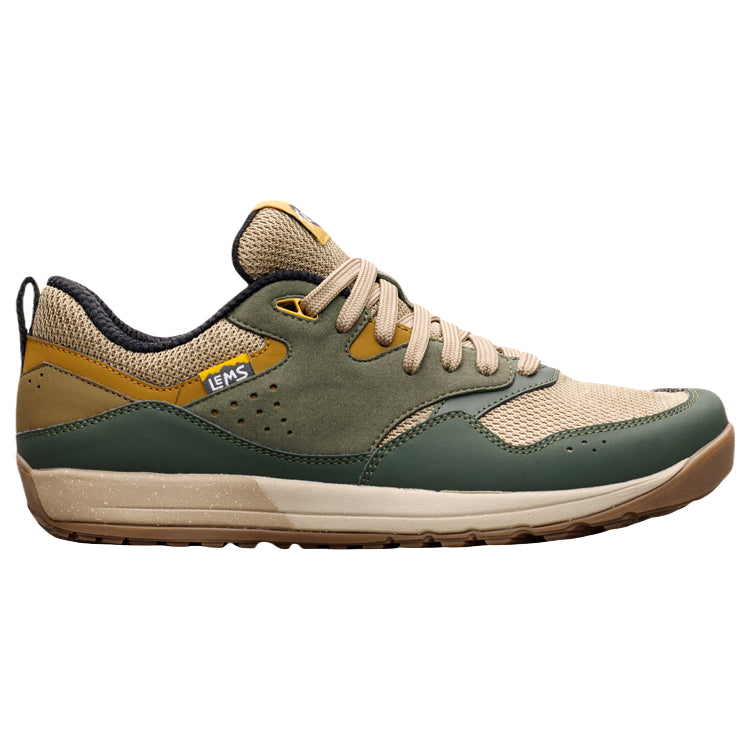



Hi. I have sesamoiditis/arthritis in my big toe, and since I started wearing Correct Toes and Altra shoes, it has improved. Unfortunately, I may have transitioned too fast out of my Keens because I am getting lots of top and side of the foot soreness. I desperately want to use minimalist shoes because I think it’s so much better for my body, but I’m not sure what to do now. Once I started using the Altras, I admit I didn’t go back to my Keens/orthotics because they felt so uncomfortable. My plan is to go back to step one and use my Keens/orthotics again and slowly start transitioning again. I plan to go barefoot at home and continue with my exercises/stretches from Katy Bowman’s Nutritious Movement website. I’ll add the Altras slowly each week. Any tips/ideas of what I should do, or does this sound okay? Thanks. I love your website. Oh, and I am a hiker, not a runner.
Hi, Tina,
Thank you for your comment. I’m sorry to hear about that foot soreness you’ve been experiencing. I think your plan to (at least temporarily) take a few steps back and then slowly begin the transition process again is a good one. Sometimes it takes a few tries before everything clicks. Remember, foot rehabilitation is a long-term game, and there may occasionally be setbacks along the way. Your good attitude and willingness to persevere will serve you well along this path, though, and, of course, we’re always here to assist you however we can.
I did want to share one additional resource from our site with you. It’s an article that focuses on the top tools and tips for achieving optimal natural foot health:
www.naturalfootgear.com/blogs/educational-articles/10-best-natural-foot-health-tools-tips
Please do keep us posted on your progress as you reenter the transition process!
Kind regards,
Robyn Hughes, ND
Hi. I am trying to transition into the Lems Primal 2 shoes, but I’m having issues with tight and sore calf muscles. I am concerned that the zero drop is too much for me, and I am wondering if it is possible to use a heel lift or heel cup in the Lems temporarily to increase the ratio? I’ve tried finding a more transitional shoe with 4 to 8 mm of drop, but they don’t seem easy to get. I’d rather stick with the Lems. Thank you for any assistance you can provide.
Hi, Tina,
Thank you for your message. I’m sorry to hear about the problems you’ve encountered in your transition to the Lems Primal 2. The speed of minimalist shoe introduction can have a significant impact on your musculoskeletal experience, and so it’s very important to make the switch in a gradual and sustainable way, especially if you have worn conventional footwear for many years or decades.
Some people do find it helpful to incorporate a heel cup (www.naturalfootgear.com/products/tulis-heel-cups) when transitioning to minimalist shoes. It can provide that little extra bit of comfort and help ease the strain on a variety of lower leg tissues and structures. You might also consider using a shoe, such as the Lems Trailhead (which has 4 mm of drop) as an interim model on your way to, ultimately, feeling comfortable in the Primal 2 (although you’ll be sacrificing a fair bit of toe box width in the process). Some of the shoes in the Topo Athletic product lineup might also be helpful for this purpose.
In terms of the tight and sore calf muscles, specifically, you might consider visiting a talented local massage therapist to help support your transition to these more healthy-foot-shaped shoes. A good massage practitioner will be able to address problems such as trigger points and myofascial adhesions that may be contributing to the discomfort you’re currently experiencing. You might also try some gentle stretching/lengthening exercises for your calf muscles and your Achilles tendons. Your massage therapist, physical therapist, or other such practitioner will be able to demonstrate these stretches for you.
I hope this info helps, Tina! Please do report back on your progress after you’ve had the chance to address your current challenges.
All the best,
Robyn Hughes, ND
Great article! I am using your website as a guide to transitioning to minimalist footwear. My background: I turn 40 this year, am reasonably fit, have no health issues, have never broken a bone or had surgery. After getting a Labrador last year, and after increasing the frequency of my walks (and even incorporating occasional running with my pup), I realized that cushioned footwear failed me. I was having trouble feeling the ground when I walked, and I experienced ankle instability. One day, I found that my feet were sore and inflamed and I could not walk (only hobble) for the following 3 weeks. After icing and rest, I started to get back to a somewhat normal routine. It took me 7 weeks to be able to start walking my dog again.
A visit to the podiatrist led to this diagnosis: fallen arches, overpronation, and tailor’s bunions. I realized all of this was directly tied to my shoes—a size too small, and with no room for my toes to splay. I have started to go barefoot at home. My feet hurt at the beginning and end of each day, and my ankles turn shades of purple sometimes. I bought Birkenstocks with a backstrap (as I am most comfortable in these), and I am trying to regain my foot strength and strengthen my core. I signed up for 10 sessions with a personal trainer as I am not comfortable exercising on my own, considering the pain I was in, and the damage done to my feet. I now wear New Balance 1540 V3 stability shoes; they are heavy, have tread, and I can feel the ground when I walk. My goal is to build my foot strength and transition out of these stability shoes. I hope to wear Birkenstocks year-round and minimalist Lems shoes in the winter. I don’t run, but I do love hiking and long walks. Thanks again for all the information and any suggestions are welcome.
Greetings, Divya! Thank you for posting your comment. It sounds like it’s been a long (and sometimes painful) journey of discovery for you. I appreciate your resilience and applaud you in your goal to build optimal foot strength and function over time. It can take a while to achieve, but please know that we are right there beside you, cheering you on all the way. If you ever have any questions about how to transition to minimalist shoes, or a natural approach to foot care in general, please do not hesitate to reach out to us!
All the best,
Robyn Hughes, ND
Hello. Are the Pedag metatarsal pads removable? I wear Vivobarefoot shoes with insoles, and I’m wondering if I’ll need to have a dedicated pair of insoles for the Pedags in case I later decide to walk without them. Thanks!
Hi, Nathan,
Thank you for your question! Pedag metatarsal pads have an adhesive backing, and so they stick to your insole or the footbed of your shoe. You can remove them, but it’s unlikely that you’ll be able to place them again and have them stay in place (as the adhesiveness will be lost). You can certainly do as you mentioned (having a dedicated pair of insoles for the Pedags), or you can use Strutz foot pads, which you can wear on your bare feet, over a pair of toe socks, or within pretty much any shoe or boot. Just a thought! Here’s the place to find Strutz foot pads if you opt to go this route:
www.naturalfootgear.com/collections/strutz-foot-pads
Please let us know if you have any other questions!
Kind regards,
Robyn Hughes, ND
Hello! I have recently fallen down the rabbit hole of minimal barefoot shoe technology and have some thoughts and questions. While the concept of going back to nature with our footwear sounds amazing, and while being more like our ancestors from 1000 years ago seems very much aligned with our nature, I can’t help but think that the environment we live in is so different and not conducive. For example, our barefoot ancestors didn’t spend 8 hours standing on concrete or hardwood flooring. Instead, they walked on soft earth, grass, and sand. I am a bit concerned that this technology doesn’t account for this. Am I wrong? I truly want to feel like I’m doing my body good, but I also want to be sure the human foot can withstand the barefoot shoe technology in the modern world with these harder surfaces. Thank you!
Thank you for your excellent question, Elizabeth! This is a really important topic in the world of natural foot health and minimalist footwear and is certainly worthy of thought and consideration. We have put together another article that addresses this very question in greater detail (www.naturalfootgear.com/blogs/popular-q-a/can-walking-barefoot-on-modern-surfaces-be-harmful), but to summarize, it’s our belief that the foot and musculoskeletal system are incredibly adaptive and that with time, patience, and a gradual approach, you can train both of these to handle the challenges presented by our modern urban and domestic landscapes.
For those who have worn conventional footwear for a period of decades, though, the usual and most effective progression is from said conventional footwear to a transitional style of shoe (something like a Lems Primal Pursuit, for example) to a minimalist shoe and then, ultimately, on to barefooting, should the interest to do so be there. This flow helps pave the way, so to speak, for progressive and lasting foot adaptations and helps minimize the chance of any problems arising. Short bouts of low-intensity barefooting at various points in the process can be helpful too, as a training technique, as long as you don’t overdo it!
We hope you find this response helpful! Please feel free to add any follow-up questions or comments here and we will get back to you as soon as possible.
Yours in Foot Health,
Drs. Marty & Robyn Hughes
I’ve been thinking about transitioning to minimalist shoes, but I am concerned that it won’t be possible, as I work full-time on a concrete floor at a big box hardware store. Any advice?
Thank you for your excellent question, Greg! This is one that we frequently receive here at Natural Footgear, and it’s a very reasonable question to pose by those who spend long parts of most days in a weight-bearing situation on unyielding surfaces.
The human body is incredibly resilient, and it’s our belief (and experience) that most people can, with the proper time, care, and consideration, reach a point where it’s possible to comfortably wear minimalist footwear on concrete floors for all or most of the day. This is usually best accomplished, though, by employing a phased approach and introducing minimalist footwear slowly and gradually. This might mean wearing these flat and flexible-soled shoes for an hour or less at the start before swapping them out for your more conventional footwear for the remainder of the work day.
Over time, and as important foot and toe adaptations occur, you may find that you can wear your minimalist shoes for longer and longer periods, ultimately phasing out your conventional footwear entirely. To assist in this process, we typically find it best to pair your new minimalist shoes with metatarsal pads, such as Pedag metatarsal pads (www.naturalfootgear.com/products/pedag-metatarsal-pads), which help ensure that your forefoot fat pad—a natural source of cushioning for the heads of your metatarsal bones—can play the important supporting role that your body requires. Other footgear, such as Correct Toes (www.naturalfootgear.com/collections/correct-toes) and Injinji toe socks (www.naturalfootgear.com/collections/toe-socks), are also important players in this regard and help distribute the forces of body weight over a greater surface area (and away from vulnerable parts of your foot).
Another consideration, and something that many folks in your situation have put into practice, is to kick things off with a transitional-style shoe; that is, a shoe or boot that possesses all of the main foot-healthy features we know to support long-term foot health, such as a wide, anatomical toe box, a zero-drop sole, and an overall lightweight design, but that also incorporates a little bit more material beneath the sole of the foot. A good example of this type of shoe is the Lems Primal Pursuit (www.naturalfootgear.com/pages/lems-primal-pursuit-shoes). Indeed, many folks working in similar settings find this to be a great model, especially earlier on in the process.
For more inspiration in this realm, you might consider checking out our article entitled “Can Walking Barefoot on Modern Surfaces Be Harmful?” (www.naturalfootgear.com/blogs/popular-q-a/can-walking-barefoot-on-modern-surfaces-be-harmful) Barefoot walking may not be for everyone, but it’s helpful to know that the human body can, in most cases, rise to the challenge of handling the firmer surfaces we encounter in our everyday lives, given enough time and the proper exposure.
We hope you find this answer helpful! If you—or anybody else reading this—has any follow-up questions, please drop a comment here and we will reply as soon as possible.
Yours in Foot Health,
Drs. Marty & Robyn Hughes
Can I wear minimalist footwear even though my left leg is 1 inch shorter than my right leg? Is there something I can do to compensate for the 1-inch difference?
Hi, Donna. Many thanks for your questions. Yes, it’s usually possible to wear minimalist footwear even if one of your legs is shorter than the other, but there are a few important considerations to ensure comfort and avoid potential strain. Minimalist shoes are designed to encourage a natural foot strike and optimal alignment, which can be beneficial for your posture and overall gait. However, and as you are intimately aware, when one leg is shorter than the other, it can create a slight imbalance that may affect your walking and running mechanics, which can have a variety of knock-on effects on your musculoskeletal system.
To compensate for the 1-inch discrepancy, one option is to use a full-length shoe insert or insole to lift the shorter leg slightly, bringing your hips and spine into better alignment. Many people find that a small lift in one shoe—usually around 1/4 to 1/2 inch—can provide relief and reduce any discomfort. It’s important to experiment with the thickness of the lift, though, as adding too much height can cause new imbalances. You might want to consult a podiatrist or physical therapist to help you determine the right type of insole for your unique situation. They can also guide you in evaluating your gait and ensuring that you don’t develop compensatory habits that might lead to other issues down the road.
In addition to adding a lift, wearing minimalist shoes that allow for plenty of natural foot movement and flexibility may help strengthen the muscles in your legs and feet over time. This can improve your overall balance and posture, which may offset some of the effects of having a leg length discrepancy. However, it’s essential to listen to your body and make adjustments as needed. If you experience any discomfort, pain, or noticeable changes in your gait, it might be helpful (in the short term) to reconsider the use of lifts to ensure that you’re maintaining proper alignment and avoiding injury. For the long term, you might consider seeking out a custom shoe builder who can cater to your specific footwear needs.
We hope this info is helpful! Please don’t hesitate to reach back out with any additional questions.
Yours in Foot Health,
Drs. Marty & Robyn Hughes
I would like to offer encouragement to anyone who might be intimidated by the process of transitioning. However long it takes, I believe the results are worth it. And sometimes it happens faster than you might think. In my case, it was a very smooth and easy process. I’m not a runner, so my experience had to do with walking, mostly on city sidewalks. I was having neuroma pain and recurring bouts of plantar fasciosis. I first switched to Altra shoes—flat, flexible, and with more toe room than conventional shoes—and with some cushioning. They felt great, but I still had neuroma pain. Then I tried Unshoes, which have no cushioning at all, and to my surprise, the pain went away within a week. I’ve had more than five pain-free years and now have a full wardrobe of “functional footwear.” I think the reason my transition was so easy was that for years, I had always gone barefoot at home—and I worked at home. I didn’t realize until I tried that I could walk long distances essentially barefoot.
Hi, Karen,
Thank you for your comment. And thank you for sharing your inspirational story and your encouragement! Having that barefoot base can indeed be helpful for those making the transition to minimalist footwear, though most people can manage it using the strategies mentioned in the article above. It’s great to hear that you’ve done so well in functional footwear, and I wish you much continued success going forward!
Kind regards,
Robyn Hughes, ND
I have recently started my transition to minimalist/barefoot shoes at 46 years old. I bought some cheaper shoes online to see how my feet would handle it to start with. I went barefoot more often for about two weeks before getting the shoes. I have been barefoot or in barefoot shoes for about seven days now. My shins, calves, and hips/back are sore. Should I back off from wearing the shoes all day and go back to my Brooks running shoes in between? The Brooks shoes, unfortunately, do not check any of the boxes for a proper minimalist shoe. I have also been doing more stretches, Pilates, and toe/foot exercises. The discomfort in my shins and the sore feet at night are what is bothering me the most. I guess I went all-in too quickly. I also have bunions and bunionettes. I plan on buying Correct Toes soon to address those. Thanks for any advice!
Hi, Kerri,
Many thanks for your comment. It sounds like you’re diving into minimalist footwear with a lot of enthusiasm, which is great! The soreness in your shins, calves, and hips is common when transitioning, as your muscles are adapting to new movement patterns. It’s important to ease into minimalist shoes gradually, though, so backing off and alternating with your Brooks shoes could be a smart approach. As your body adjusts, focus on shorter walks and more frequent rest days. Incorporating more foot strengthening exercises and using Correct Toes will help in the long run. Take it slow—your body will thank you for it!
Kind regards,
Robyn Hughes, ND
I transitioned to minimalist footwear several years ago, and now my toes have a nice spread (partially thanks to Correct Toes). I wear exclusively minimalist footwear. But how can I take my foot health and strength to the next level? I feel like my foot health isn’t optimized and there’s more I could do, but I don’t know where to go next.
Hi, Jen. Thank you for sharing your experience and for your thoughtful question—it’s one we hear often from folks who’ve already made significant progress in reclaiming their natural foot function. First off, it’s fantastic to hear that your transition to minimalist footwear has gone well and that you’ve achieved healthier toe splay with the help of Correct Toes. That foundation alone has set you up for long-term foot health success. Still, as you’ve rightly noted, there’s often another level of foot health and performance that lies beyond simply wearing minimalist shoes. The key now is to shift your focus from passive alignment to active engagement—specifically, cultivating strong, responsive, and resilient feet through intentional movement and stimulation.
One of the most effective ways to build upon your current foundation is to integrate foot-specific exercises into your regular routine. Think of things like the Short Foot Exercise, the Toe Extensor Stretch, toe splaying against resistance bands, and controlled single-leg balance work on uneven surfaces. These types of movements can help reawaken the smaller intrinsic foot muscles that may still be underutilized, even in a minimalist footwear context. Going barefoot indoors—especially on natural textures like cork, wood, or textured mats—can also heighten proprioception and further condition the neuromuscular pathways that contribute to strength and agility. Just like with any form of training, consistency over time yields compounding benefits.
Incorporating more natural terrain into your daily movement is another powerful and often overlooked strategy. If possible, seek out opportunities to walk on grass, sand, gravel, or forest floor. These varied and irregular surfaces challenge your feet to adapt in real time, prompting subtle adjustments in foot positioning and muscle activation that a flat urban sidewalk simply can’t provide. You might also explore movement disciplines such as yoga, martial arts, Feldenkrais, or natural movement training (such as MovNat), which encourage full-body integration while placing a healthy demand on foot awareness, strength, and stability. Your feet will respond dynamically to these new challenges.
It’s also worth examining the health of structures upstream from your foot: Ankles, knees, hips, and core. Foot function is deeply intertwined with overall body mechanics, and any restrictions or imbalances in the kinetic chain can subtly limit the progress you’re able to make with your feet. Functional movement assessments, mobility routines, and even working with a practitioner who specializes in natural movement or gait retraining can help you uncover blind spots and break through plateaus. In this way, your journey toward optimal foot health becomes part of a broader and more holistic pursuit of full-body wellness.
Ultimately, what you’re describing—the feeling that “there’s more”—is a testament to how alive and aware your feet have become. That awareness is a gift, and it’s also a compass pointing you toward continued refinement. The next level isn’t a single destination but rather a mindset: One of curiosity, experimentation, and a commitment to daily, mindful movement. You’ve done the hard part by stepping away from conventional footwear. Now, we believe, it’s time to explore the full capacity of what naturally functioning feet can do—both at home and out in the world. We hope this info helps! Please let us know if you have any follow-up comments or questions!
Yours in Foot Health,
Drs. Marty & Robyn Hughes